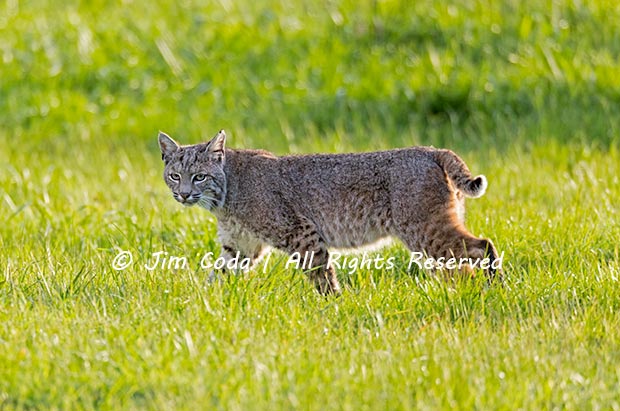Bobcats; Comparing Point Reyes National Seashore and Yellowstone National Park

I go to Point Reyes National Seashore (PRNS) often. It’s rare that I go and not see at least one bobcat. I also spend a month or so almost every year in Yellowstone National Park (YNP). Yet, I’ve never seen a bobcat there in spite of the fact that they do exist. I’ve often wondered why.
According to my most recent copy (2013) of the annual “Yellowstone Resources and Issues Handbook,” bobcat numbers in Yellowstone are “unknown, but generally widespread.” It says their habitat is in rocky areas and conifer forests. It goes on to say that they are rarely seen, with most reported sightings being in rocky areas and near rivers. I’ve seen a few online photos of them along the Madison River in winter. Given the lack of stated population numbers, I assume they haven’t been studied much in Yellowstone, if at all. I’m not aware of any bobcat study in PRNS either. I assume PRNS doesn’t know how many bobcats there are in PRNS, let alone what their habitat preferences are.
In any event, why do I see bobcats regularly in PRNS and never in YNP? I can only speculate. My best guess is that it has to do with where the bobcat finds itself in the predator pecking order in each place. In YNP the bobcat has to worry about grizzly bears, black bears, wolves, coyotes and mountain lions. In PRNS it’s just coyotes and a very, very few mountain lions. This may cause them to stick to the forests and other good cover in YNP without the same pressure to do so in PRNS. If so, this reminds me of what I found last spring photographing pumas (aka mountain lions) in Patagonia’s Torres del Paine National Park (TDPNP) and adjacent private land. There are no bears or wolves in TDPNP. There is a coyote-like predator there called the culpeo, but coyote-sized animals are no threat to a mountain lion. While mountain lions in YNP stay in good cover, in TDPNP they feel no need to hide. I saw 18 pumas in a week in TDPNP and all of them were in open areas – like the bobcats in PRNS.

